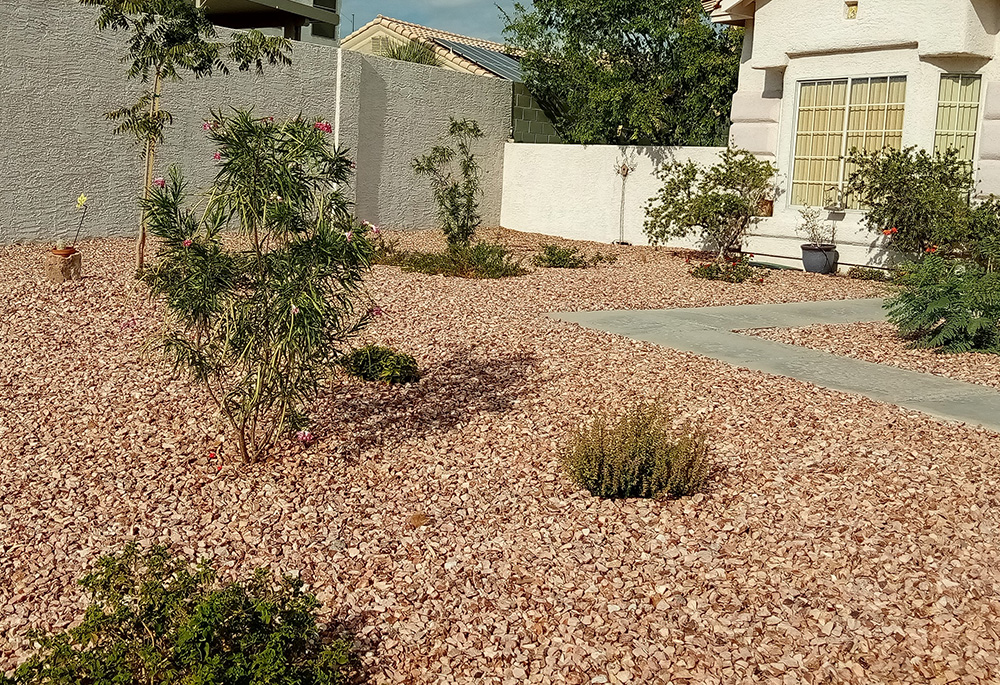
Margie Klein's yard is pictured after it had been converted to a xeric landscape, including rockscaping and southwestern native plants. (Courtesy of Margie Klein)
This past year, I had to retrofit my landscape. The traditional green lawn was swallowing up too much water. Not only was it a gluttonous use of the precious water resource, but also water rates had been jacked up to unaffordable costs. True, my husband and I could afford our lush sanctuary when we were working, but now with both of us retired, cutbacks had to be made. Furthermore, the increasingly hot and brutal climate forced our hands.
A before photo of Margie Klein's yard (Courtesy of Margie Klein)
My husband and I bought the property almost 30 years earlier and installed lots of greenery to remind us of our homes back east. You could say we had an addiction to green, but the green was at long last turning to yellow and some of it to brown. So I went xeric — very dry — and put in plants that are adapted to living in an extreme climate and on a lower amount of water.
Fortunately, the water utility company offered a rebate as incentive, and that paid for the conversion. With a background in agriculture and natural resource management, I was able to plan my own design, enjoying the challenge of choosing appropriate and pleasing plants for the front yard. That saved us a lot of money, but we still had to cover the costs of plant materials, irrigation lines, ground fabric, decorative rock and, of course, the labor.

Margie Klein's yard is pictured after it had been converted to a xeric landscape, including rockscaping and southwestern native plants. (Courtesy of Margie Klein)
In the backyard, the lawn had mostly died out, so I searched for alternatives to still have some sort of cover for dogs and people to play on. Instead of a lush lawn of grasses that shouldn't grow in the desert, I turned to mixed species of clover, buffalo grass and wildflowers. I was amazed to find suitable flowers and southwestern native plants that could give me a beautiful landscape.
I've never put down so many seeds. Granted, the backyard desert meadow still disappeared in the 118-degree Fahrenheit temperatures of the Mojave Desert summer, but all fields need their rest. We couldn't get outside to appreciate the vegetation in that heat anyway. And we knew that with autumn came a rebirth of growth.
Advertisement
We never thought we'd go to "rock-scaping," but found out that xeric didn't have to mean "zero" plants. It just required an adjusted point of view, along with new assessment, discernment and application.
Why are we so stuck in our addiction to the status quo, believing that it alone can supply us with what we need? When, in fact, we can do well with so much less excess, and live well on what God naturally supplies us — less water, less green, less towering green spires.
Eliminate the waste and see what you really need to survive: God's love. We can live as well as we hope to by adjusting to God's parameters.






